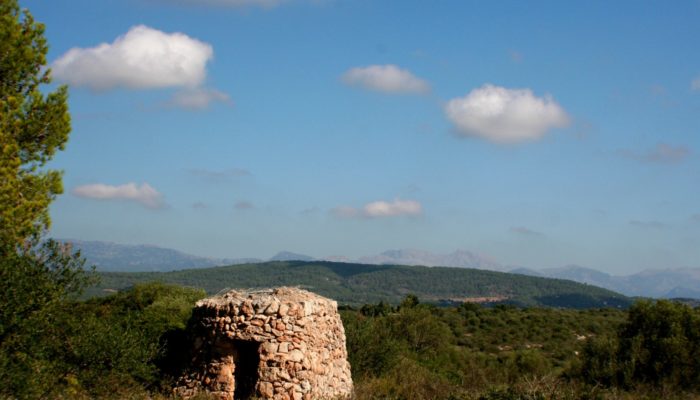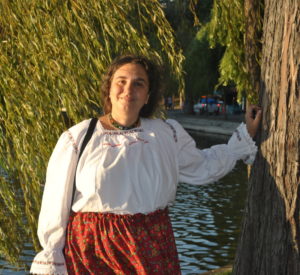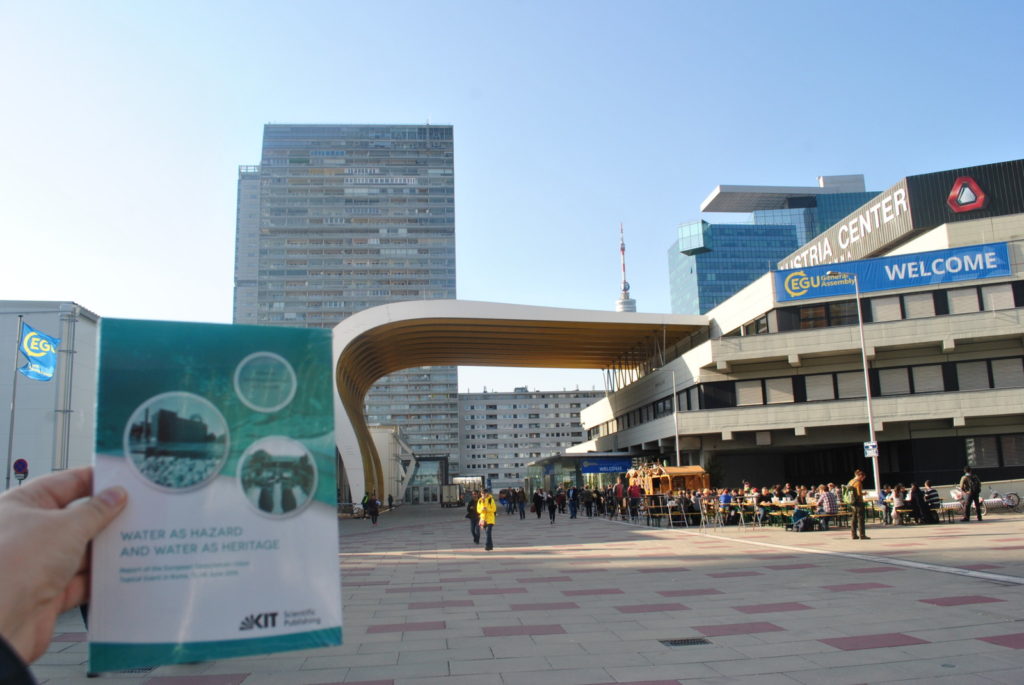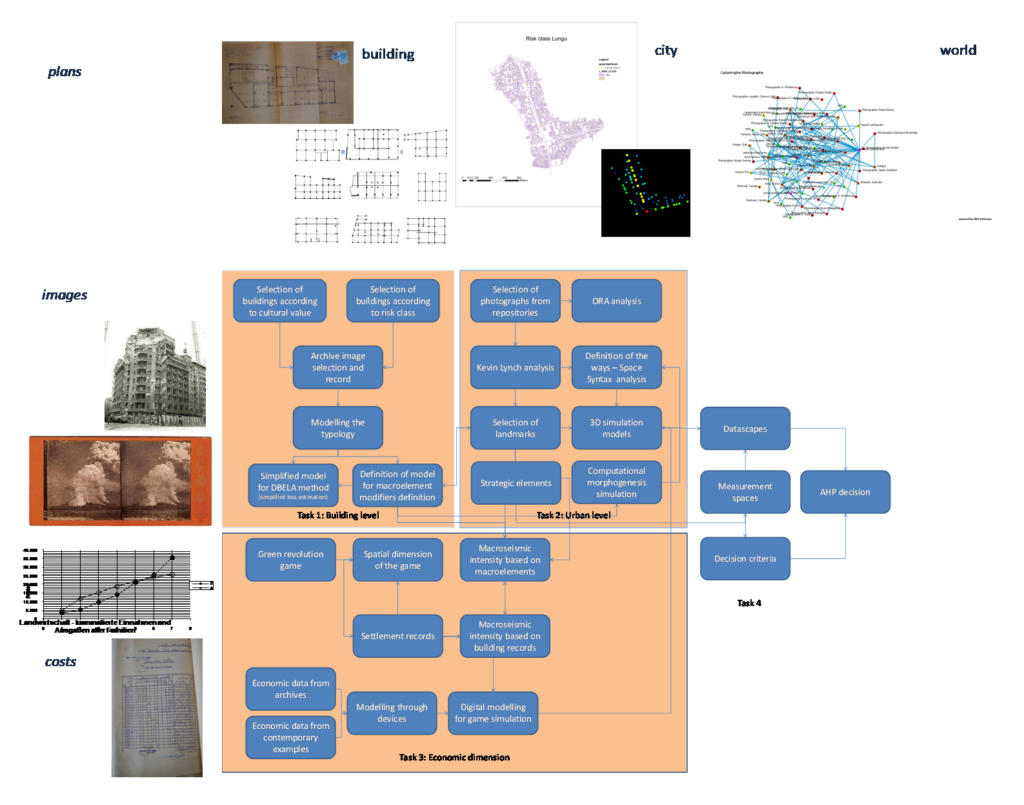
In today’s interview, we talk with Dr Maria Bostenaru. Maria is an architecture engineer interested in the complex relationship between urban areas, natural hazards, and heritage. She tells us how she thinks that involving more humanities, which include, for example, the study of languages, literature, archaeology, together with information technology solutions, may result in new important advances in her field of research. Moreover, she provides some useful tips on editing and authoring books.

Dr Maria Bostenaru
Hi Maria, can you briefly introduce yourself and your scientific background?
Currently, I am a permanent researcher at the University of Architecture and Urbanism ‘Ion Mincu’ in Bucharest, Romania. I graduated from the University of Karlsruhe (now Karlsruhe Institute of Technology) in architecture, focusing on urban planning. In my diploma work, I looked at the vulnerability of water as an ecosystem. After graduation, during my specialisation in regional planning, I worked within the Collaborative Research Centre on Strong Earthquakes focusing on the Vrancea earthquakes in Romania, my home country. While still in Karlsruhe, I started a doctorate project in civil engineering investigating how seismic retrofit interventions are applicable and economically efficient when applied to existing buildings. At the time, even though a thesis was submitted, I was not entitled to defend it due to bureaucratic and administrative issues. Despite that, during this time, I greatly benefitted from visiting, as a Marie Curie Fellow, and collaborating with the Reduction Of Seismic Risk (ROSE) school at the Istituto Universitario di Studi Superiori di Pavia, in Italy. At the latter, I also returned after winning a competitive Marie Curie Intra-European fellowship. After this experience, I returned to Romania with a Marie Curie reintegration grant. I started a new doctorate project in architecture, namely ‘Interwar architecture with reinforced concrete structure exposed to multi-hazards in the European context. Intervention in the Romanian and Italian context’. In 2012 I obtained a doctorate.
What is your most current scientific focus?
After researching earthquakes, architecture and their relationship, I became interested in water and its dimensions as a hazard and heritage. This interest developed in the implementation of humanities in hazards research with the help of information technologies. My current research interests revolve around digital humanities: photography archives. I work with public space or with memory in cemeteries. I deal with building the so-called ‘heritage habitat’, a concept developed by Cristina Olga Gociman[1], unravelling around the fact that post-disaster important landmarks (as defined by Kevin Lynch in his ‘The image of the city’) have to be conserved to facilitate resilience, the adaptive capacity to manage change, order and disorder over time, in this specific case, within an urban context. Moreover, I am involved in research networks related to information technology (IT) and heritage and arts and humanities (COST, ESF RNP, ICOMOS), but also in the evaluation of EU and nationally funded projects from various countries in the field of IT and cultural heritage, sometimes with hazards component.

Water as hazard and water as heritage workshop flyer, on the background the Vienna conference centre where the EGU General Assembly traditionally takes place. Photo credit: Maria Bostenaru,
What are, in your opinion, the most recent and important advances in research addressing the impact of natural hazards on our modern society and infrastructure?
This is a difficult question. But I would say that the most recent advances are related to improvements in computing power. In fact, we can now address the impact of natural hazards on an urban or even larger scale. While 20 years ago we always dealt with scale issues and the decision to focus on zones, or buildings or elements of a building, there is now more and more detail possible while taking into account whole urban areas and large infrastructures. In Rome, I attended the European Open Science Cloud for Research (EOSC) Workshop in February 2016. Members of the European Plate Observing System (EPOS) explained how to use large scale research facilities for seismology records with cloud computing. Cloud computing is a breakthrough technology like the Internet of Things, which, to put it very simply, is a system of interrelated computers and similar devices capable of accessing and transferring data over a network and helping the automatization of data analysis.
In my opinion, more steps are needed to include the cultural heritage dimension when proposing mitigation measures for risk from natural hazards.
What are instead the points that you think will need to be addressed more in the future?
In my opinion, more steps are needed to include the cultural heritage dimension when proposing mitigation measures for risk from natural hazards. For example, I recall that Bucharest’s central area and the related seismic risk were mainly addressed from a civil engineering perspective, with all buildings considered common buildings. But that area is also an architecturally ‘protected zone’, the so-called ‘Modernist boulevard’. Likewise, in Romania and in other places in the world, there are entire zones, assemblies listed as monuments, not only single buildings. For the nature of these zones, when working on retrofit interventions, heritage conservation professionals must work alongside engineers.
If social sciences are more and more involved within natural hazards research, the same cannot be said for humanities and cultural heritage. In some European countries, Portugal, for instance, the connection between civil engineering and the restoration of buildings is already there, but it should be more diffuse. Another example is the work by Gerrit Schenk in Darmstadt, Germany. He works with the history of catastrophes via related images trying to analyse the socio-cultural impact of disasters. Thanks to a Vasile Pârvan fellowship and a support grant at the Canadian Centre of Architecture, I also researched images of disasters. Still, I analysed them using, among others, Kevin Lynch’s method. The book ‘Illustrated history of natural disasters’ by Jan Kozák and Vladimír Cermák is a good example. A precursor of this book was launched in Potsdam on the anniversary of the 1755 Lisbon’s earthquake. In fact, we could say that Lisbon’s earthquake started the humanities discussion on natural disasters, but it is now largely forgotten. Another example of good interaction between humanities and natural hazards research I would like to highlight is the online exhibition created by the Max Planck Institute for Art History in Florence on the flood that hit the city in 1966.
Finally, I think it is important to include in the discussion IT solutions like developing an ontology and something I mentioned before, which is very new. I’d like to learn more about, which is the Internet of Things (IoT). I think cultural heritage deterioration could be investigated employing IoT monitoring.

Flow chart of Maria’s methodology for the digital representation of the impact of hazards on urban areas; for more details, you can read the related NHESS article [2]. Image credit: Maria Bostenaru.
You have edited and authored different scientific books; what suggestion would you give to an Early Career Scientist interested in doing the same but does not have any experience in it?
I started with books when I was an Early Career Scientist. The best advice I received at the time was to look for publishers who would support the printing costs. For example, in 2006, I attended the conference on the 100 years since the San Francisco’s earthquake, and Springer had a stand there. I took the chance to discuss with their editorial team, which eventually resulted in my first edited book about materials technologies and practice in historic heritage structures. Conference exhibitions, and during the EGU General Assembly there is one, are excellent opportunities to talk to publishers and discuss your ideas.
Of course, there is a difference between editing and authoring a book. As an editor, one depends a lot on the contributors, who can drop off or not meet the reviewer requirements and thus, one has to invite new authors. A lot of time is needed to find authors as well as reviewers. And some who are ready at the beginning may become unhappy with the long time it takes to see it published. It can even take 3 years to see a book come to life.
Besides books, one can make editorial experiences proposing special issues for scientific journals and acting as guest editor. Manuscripts submitted to special issues, after they have undergone and passed peer review, can be published right away, and there is less waiting time to see the result.
Finally, choosing between books and special issues might depend on your field of research. In my case, for example, books are more appreciated than special issues. In any case, it is a good experience that fosters one’s Curriculum.
References
[1] Gociman, C. O. (2006). Managementul reducerii riscului la dezastre: strategii de arhitectură și urbanism. Editura Universitară” Ion Mincu”.
[2] Bostenaru Dan, M. and Armas, I.: Earthquake impact on settlements: the role of urban and structural morphology, Nat. Hazards Earth Syst. Sci., 15, 2283–2297, https://doi.org/10.5194/nhess-15-2283-2015, 2015.
